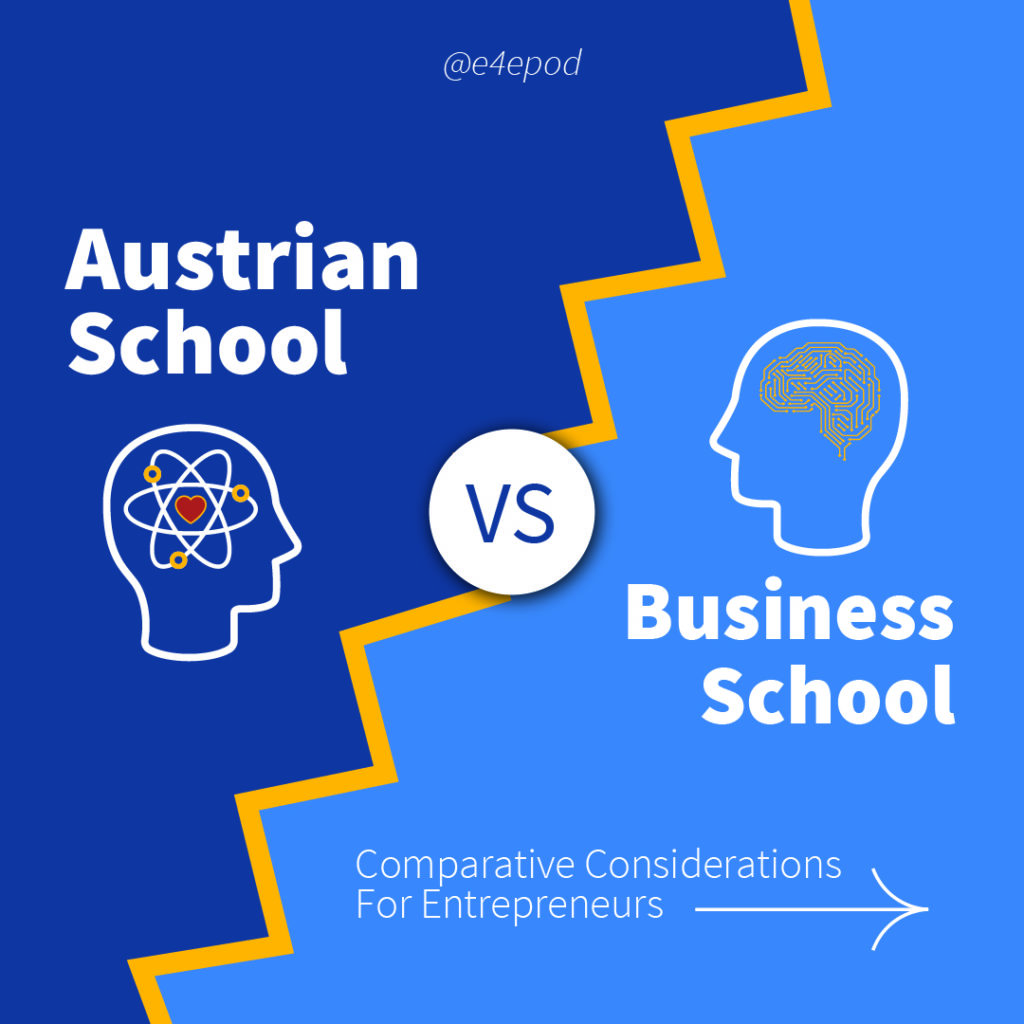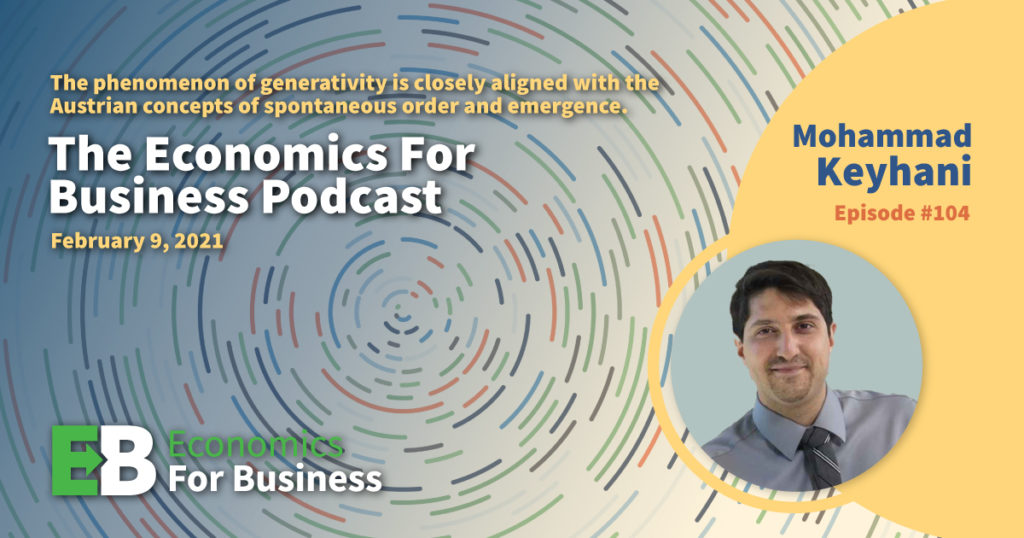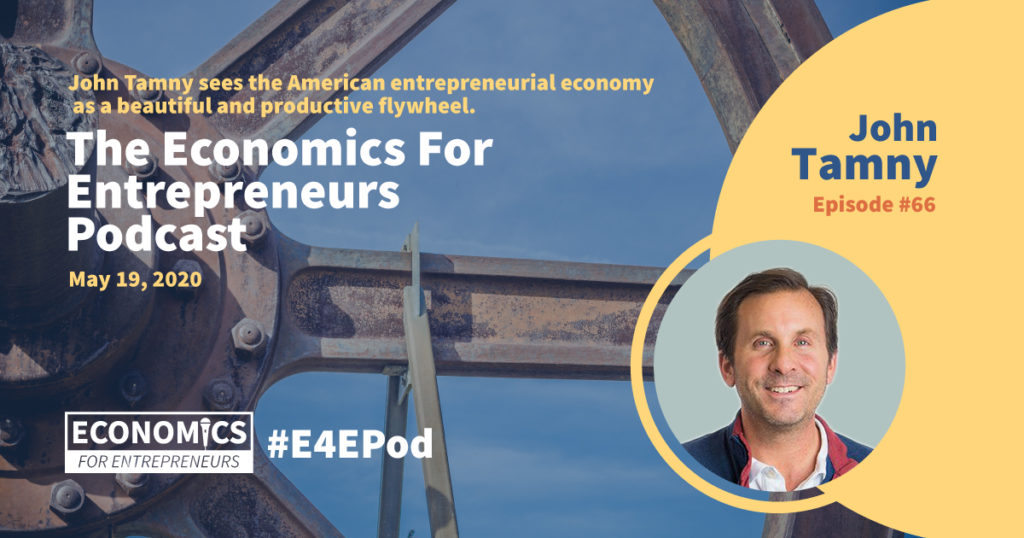Value-In-Experience Is The New Way That Firms See Potential For Value For Their Customers.

Firms who follow the Austrian Business Model framework are focused on value for their customers – a special kind of value. It’s worth reviewing the history of value theory, and how far it has advanced to the present day.
Goods-dominant thinking about value: value-in-use.
In the past, there was a belief that value was inherent in goods. Tide detergent from Procter and Gamble, for example, boasted special ingredients on which the manufacturer based their promise to make white clothes whiter and colored clothes brighter. The value was claimed to lie in the superior performance of the product formulation. The consumer was the happy recipient of this value that the manufacturer had embedded in the product. This was the prototypical value-in-use scenario, wherein value was created by producers.
Service-dominant thinking about value: value-in-service.
At a later stage in the evolution of value theory, it was realized that the economy was shifting from goods-dominance to service dominance, so the logic of value embedded in products was no longer relevant. Consumers and business customers were not, it was further realized, passive recipients of value. Services are a two-way interaction in which the customer is as active as the service provider. Value, it was identified, is co-created by the service provider and the customer. Think of IT services provided by a vendor to a customer. The customer makes the service value possible by identifying or prioritizing the problem to be solved or the performance to be upgraded; by providing access to the building and/or computer systems; and by providing people to assist and direct the IT service provider. Co-creation of value becomes the norm in service exchange.
Further, it was realized that Tide is actually the provision of a service to the consumer of helping with laundry tasks. The consumer buys the product for the service it provides, The consumer also provides the washing machine, the timing and occasion of the washing task and the kinds of clothes being washed, feedback about performance, and additional aspects of co-creation of value. Therefore co-creation of value became the standard value theory for both products and services.
Value-dominant thinking: value-in-experience.
Businesses have now advanced further in their value theory and value provision. It is now realized that there is no value unless it is identified by the end-user, either the consumer or the business customer. Value is formed only in their domain. In this context, value has a new definition. It is value as an experience. Value is a feeling in the customer’s mind. Customers first appraise a value proposition made by the service provider or goods manufacture – a promise made to them that they evaluate: is there anything in this proposition for me? If so, the customer compares the proposed value to all the alternative substitutes available on the market, as well as comparing the proposed value to not buying at all, saving money for a future purchase opportunity. If they detect relative value, they will make a decision on a value exchange – actually parting with dollars to acquire the service or good that’s on offer.
The most important part of the value process follows: the customer uses the product or service and evaluates the experience of doing so. How does it feel? What emotions are they experiencing? A feeling of satisfaction? A feeling of ease and convenience? A feeling that the experience is better than anticipated? Or worse? Does the task performance feel as enhanced as the service provider promised?
The customer steps back after this cycle of anticipating value / appraising relative value / value exchange / value experience in order to make a final decision: was the overall experience valuable? If they feel that it was, they will enter the cycle again to repeat the experience so long as the same feeling continues to be available to them.
Implications.
There are significant implications for firms and brands who internalize this new understanding of value-as-experience.
- They realize that they cannot create value. Value-creation is standard business school terminology, but it is not an accurate description of the value process. Firms can only facilitate value as a contribution to the customer’s value creation. Facilitation means designing a value proposition based on an understanding of customer needs and preferences. It means making a value promise to those customers to make them aware of the potential for new value. It means monitoring customers in their evaluation, exchange and experience. It means understanding their final value appraisal, and the experiential emotions behind it. Facilitation is complex and requires constant attention, but the final decision is the customer’s.
- The skillset that is required for successful value-facilitation is built on customer empathy. Empathy is a boundary-crossing capability – it’s as applicable to the production department and the IT department as it is to the marketing and sales departments. Understanding the mind and emotions of the customer is job 1 for everyone in the contemporary firm.
- The standard mode of action for the value-facilitating firm is responsiveness. They continuously monitor changes in customer preferences and their changing assessment of their options and priorities. They know that customers are continuously adjusting, rebalancing, re-evaluating and re-assessing their choices and decisions based on their life experiences. They are comfortable with this mode of continuous change. They are flexible and agile, avoiding rigidity and hierarchy. They don’t let bureaucracy or any other organizational design attributes get in the way of responding to the customer.
- The ethic of value-facilitating firms is service. They understand that the customer’s preferred experience includes a feeling of trust in their chosen service providers and brands.
Value facilitation is the new required core competency for firms and entrepreneurs. It’s hard to learn through case studies because the process is so dynamic and responsive to changing market environments. It requires every one of your employees, all your software and all your data collection capabilities to be focused on empathic understanding of customer behavior and the deduction process to determine the changing emotions and preferences behind that behavior. We try to explore value facilitation and value-in-experience in depth in the Economics For Entrepreneurs podcast.







Responses